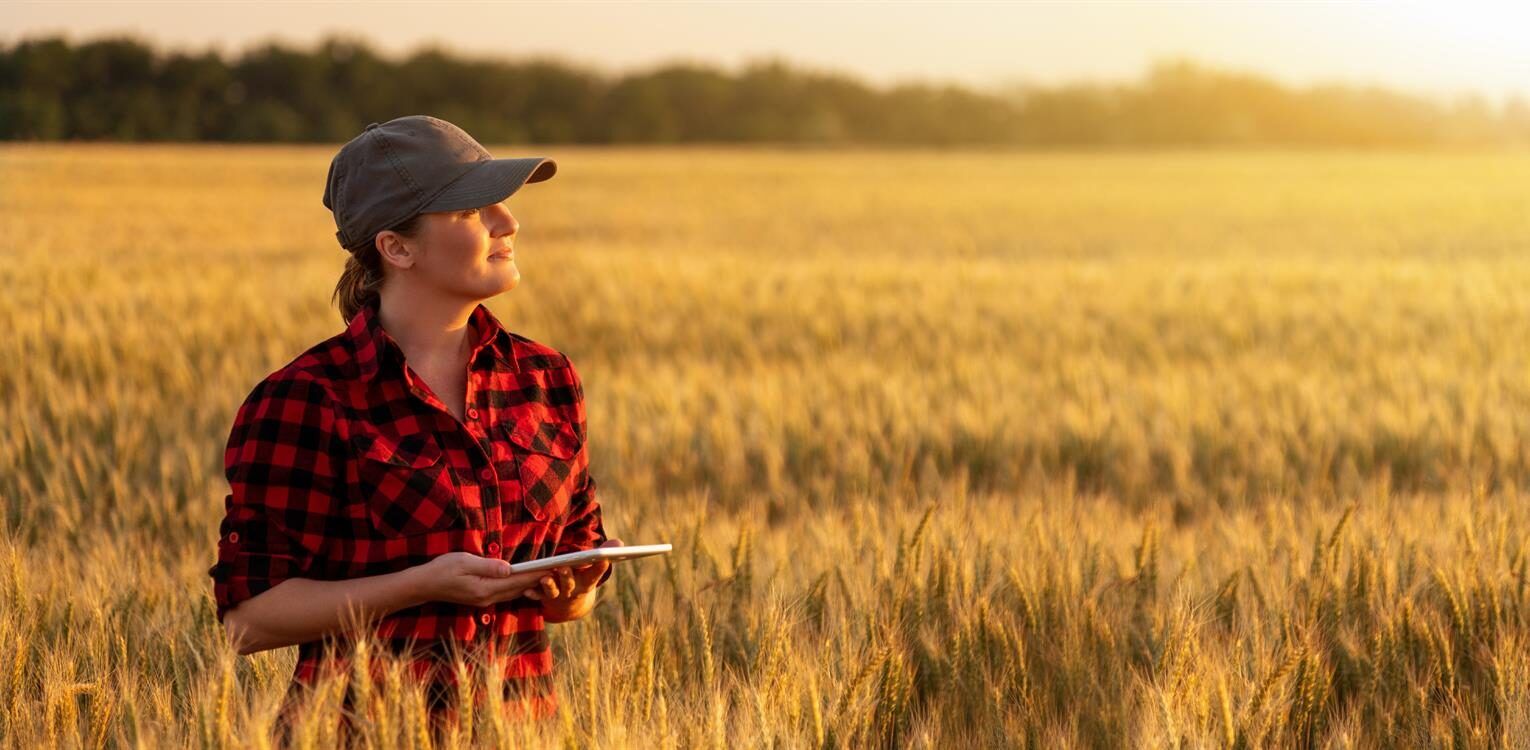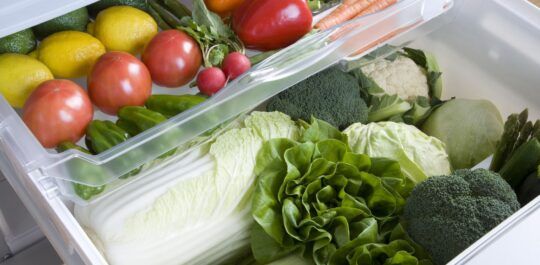Demanding consumers, stricter regulations from authorities, the glocalization trend, and farm digitization and digitalization, those were the trends shaking up agriculture in 2018. To be honest, they still impact the industry daily. However, there are even bigger curveballs we are dealing with now. Since my last trend blog on agriculture is already four years old, it is time for some new insights. If you’re in the food & agriculture industry, sit tight. Because these trends will affect your business and your operations in the coming years.
These Are the Trends Shaking Up the Food and Agriculture Industry

Trend 1 - The Growing Importance of a Connected Supply Chain and How Blockchain Helps
Food shortages in Western countries caused by supply chain disruptions are not a question of if, but when. Remember the pasta crisis in March, right after Russia invaded the Ukraine? On the other hand, we experience a considerable amount of produce, harvests, processed food, and resources being lost or wasted every single day. McKinsey estimates that 33 to 40 percent of the world’s food is lost or wasted every year.
A part of that food waste is caused by the infamous bullwhip effect in our supply chains. However, it’s an effect that we can overcome if every stakeholder in the entire chain would share their data, so each involved can get accurate insight in what amount is truly needed for production and prevent overproduction. Instead of each player just ordering or producing a little extra – just to be sure, not knowing how many small fluctuations occurred before.
Why Blockchain Is the Go-to Technology to Prevent Waste
If each link in the global supply chain was connected through technology and would share their data on their part of the chain, companies would be better equipped to anticipate on disruptions like the ongoing energy crisis. Because they would act upon holistic insight from the end-to-end chain. Not just on insights from within their own operation, but on data from the entire ecosystem they are a part of and that may affect them in the end.
Since a global supply chain consists of so many players, blockchain would be the go-to technology to connect the dots. Since this is one of the few technologies powerful enough to securely support the information that is exchanged in such a vast international network of stakeholders. If we set up a blockchain network and create a connected global supply chain, this ecosystem would be more flexible than ever. And we could actively contribute to the reduction of food waste by producing what is truly in demand and not based on what separate stakeholders think they need.
Complicating Factors in the Agricultural Chain
In reality, and certainly in agriculture, using blockchain as a part of the solution for a resilient and yet flexible connected supply chain – and as a tool to reduce food waste – is more complicated than the outlined I’ve sketched. Because food loss or waste is not restricted to production environments, supermarkets, or restaurants, and the loss that happens in agriculture is not always a result of the bullwhip effect.
McKinsey estimates that half of food loss happens during and after harvest and during processing. Although farms do overproduce and some produce doesn’t meet customer expectations, factors like climate change and draught are also responsible for this. In my opinion however, there’s another big complication that lies at the foundation of all this. The state of our agricultural soil is a big contributor to poor harvest quality and yields. And that is where the second trend I would like to discuss, comes into play.
Trend 2: The Use of Big Data to Boost Agricultural Yields in a Sustainable Way
Reducing food loss and waste by re-examining your supply chain, and improving processes where necessary, are great first steps. However, I would like to paint a bigger picture. That’s why the second trend I want to discuss, is the use of big data to start battling food waste at the very beginning of the agricultural supply chain. I am talking about our soil. Because there lies the foundation for good quality harvest (with less waste) and, not insignificant for businesses, better agricultural yields, and better profits.
I will dive deeper into why the state of our agricultural soil matters, here. For this blog, I will keep it short and sweet. Because of the intense way we have worked our fields, with fertilizer, heavy machinery, toxins and chemicals, and intense water management, the quality of our soil is lower than ever. This affects the quality of our produce but also yield itself, and as a result the profit that can be made of the land. That’s the bottom line.
Why Regenerative Agriculture and Big Data Are a Match Made in Heaven
Regenerative agriculture – a sustainable and more natural way of working our soil – like proposed in the Netflix documentary ‘Kiss the Ground’, is part of the solution to turn that tide. I purposely say, part of. Because to do this even more thoroughly, big data and IoT are equal parts of that solution.
In that sense, farmers and agricultural companies sit upon a data goldmine. There is so much insight to gain from the soil, the organisms in it, crop itself, but also weather conditions and cultivations methods. Continuously monitoring and analyzing our field and crop data helps to get the real-time insights we need to improve crop yield, enhance the quality of produce, and boost soil conditions.
Being able to act upon field insights when it matters, will prevent loss of produce during harvest and drive profit for agricultural businesses. I think we should seize this opportunity and use technology to get those insights straight from the source and aim for a field management process that can truly make a difference for our global agricultural supply chain.
Trend 3: Precision Farming to Cope with the Depletion of Our Natural Resources
This third trend is interwoven with the first two trends. However, it is important to mention this one separately. Because precision farming is a method on its own.
Precision farming – and I actually sell this too short, but blogs are not meant to be 5.000 words – is all about taking the right cultivation measures at the right moment at the right spot in a field, when it matters. And as you can imagine, sensors and IoT deliver exactly the precision that is needed for this.
Although this method is aimed at getting the best crop yield possible (and of great quality) this is again a perfect way to prevent waste of water and fertilizer and other natural resources, and a means to prevent overworking the soil. This is a great introduction of our fourth trend: sustainability. Because precision farming is a very effective way to meet sustainability goals such as being scarce with natural resources and water, but also to improve air and soil quality.
Trend 4: Sustainability – There Is No Escaping this Trend
With the Corporate Sustainability Reporting Directive (CSRD), going green is becoming a hard kpi for businesses in the European Union. This new legislation means that you must proof that you have committed yourself to SDG goals as a company. You have to disclose those efforts in your annual report by law. Hence my ‘there’s no escaping’ claim.
The CSRD makes it mandatory to be transparent about the societal and environmental impact of your business and supply chain on the world. And once again, also for this trend, technology is part of the solution to become transparent and compliant. IT and new technologies enable you to gather and analyze the data you need to gain more insight – often even automatically.
Insight in the Full Lifecycle of Tuna Fish with Blockchain
A great example of this, is the way NTT DATA helped fish processing company Tecopesca in Ecuador to build a trustworthy and proven sustainable supply chain with blockchain. The production company is adamant to put sustainability first in its operation. From the suppliers – traditional fishermen who catch the tuna fish – to the logistic providers who distribute the processed fish. Tecopesca wanted full traceability and searched for a way to ensure their end-customers that their product is of sustainable origin. Blockchain turned out to be the solution. It enabled them to store the entire lifecycle of their product in the blockchain and to make it fully traceable and available to their customers.
Other Examples of How Technology Helps You to Become SDG Compliant
Tecopesca is just one example of how technology can help you to be compliant and prove your compliancy. Making sure products are of a trustworthy origin and driving a more animal friendly supply chain with blockchain, is something that could also work well in the meat industry.
An other example: Blockchain can be used to ensure animals are treated well throughout the chain – at farms and at slaughterhouses. And, to help prove to the public that you, as a company, guarantees no abuse took place during the lifecycle of the animals, by storing that information in the blockchain.
Committing to SDG Goals: Start with Your IT-Systems and Unlock Hidden Data Insights
Although blockchain might still be a little out of league for some companies, committing to SDG goals can also be done with the technology that is already at your disposal. In that sense, your IT-systems are a treasure trove of unexplored data. For example, my colleague Elmer Kramer recently showed how you can generate insights on your Co2 footprint with relatively small additions to your current IT-system.
I am certain that the small steps you can take with your current IT-landscape to become SDG-proof, can also become the foundation for the adaptation of your agricultural company to the other three trends. By taking these first measures, you will gradually become ready for utilizing groundbreaking technology like blockchain, to really make an impact on our global supply chain. So, how can we help you?





